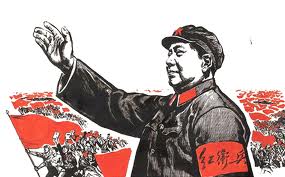19. LECTURE: Monday, October 3
Khrushchev Attempts to Rejuvenate Leninism. Stalin’s death (video in Russian) is a perfect example of a world- historical event. In 1953, the question was how to take advantage of the opportunity. The new First Secretary of the Communist Party of the Soviet Union, Nikita Khrushchev, answered this question in one of the most influential speeches in the history of world communism.
of the Communist Party of the Soviet Union, Nikita Khrushchev, answered this question in one of the most influential speeches in the history of world communism.
-
“Z” (Martin Malia), “To the Stalin Mausoleum,” section VIII. Course Reader
-
Nikita Khrushchev’s secret speech to the 20th Congress of the CPSU, February 25, 1956: HERE. (Print)
-
William Rosenberg and Marilyn Young, Transforming Russia and China, pp. 244-74.
20. LECTURE: Wednesday, October 5
Crisis in Eastern Europe: Hungary and Poland. The striking difference between the tumultuous events in Hungary and Poland in 1956 is that one led to military intervention by Soviet bloc troops (see the videos here and here of the Hungarian revolution) and the other did not. What did Hungary’s leaders do that Poland’s leaders managed to avoid? Were the issues different?
-
Previously secret: The politburo of the CPSU meets to discuss the situation in Hungary and Poland, October 24, 1956: HERE
-
Previously secret: In an, at times, perversely sardonic speech, Nikita Khrushchev reports to party activists: November 4, 1956: HERE
-
Map of Budapest (for lecture): HERE
-
Chronology of the Hungarian Revolution: HERE
21. DISCUSSION SECTION: Friday, October 7
Paragraph Assignment: What are the essential features of Nikita Khrushchev’s definition of “Leninism”?
To what extent should we consider Khrushchev’s “secret speech” to have been necessary at this point in his country’s history? Given the impact of the speech on the Soviet Union’s allies in eastern Europe, should he have chosen his words differently? Read the “secret speech” carefully, print it, and bring it to this discussion section.
22. LECTURE: Monday, October 10
Re-revolutionizing Communism in China: “The East is Red.“ Like Stalin’s terror in the Soviet Union, China’s Great Proletarian Cultural Revolution is one of those multi-year events that defies easy explanation, both because of its goals and because of its savage brutality (video). One question is why Mao unleashed his terror. Another is why he was able to do it. Why would anyone agree that it was important to destroy one’s country in order to build it? Among the peasantry and many communists, especially the young, there was enormous enthusiasm for the Cultural Revolution, as well as for the tragic Great Leap Forward that preceded it.
is why he was able to do it. Why would anyone agree that it was important to destroy one’s country in order to build it? Among the peasantry and many communists, especially the young, there was enormous enthusiasm for the Cultural Revolution, as well as for the tragic Great Leap Forward that preceded it.
-
Mao Zedong, “On the Correct Handling of Contradictions Among the People,” February 27, 1957: HERE. (Print)
-
Deng Xiaoping, “Correctly Disseminate Mao Zedong Thought,” May 25, 1960: HERE. (Print)
-
“Circular on the Great Proletarian Cultural Revolution,” May 16, 1966: HERE (Print)
-
Rosenberg and Young, Transforming Russia and China,
 remaining chapters on China, including the Great Leap Forward and the Great Proletarian Cultural Revolution. (Note: They get a little starry-eyed when they talk about the Cultural Revolution, so remember that this ten-year event led to the deaths of millions of people and destroyed the lives of hundreds of millions of others).
remaining chapters on China, including the Great Leap Forward and the Great Proletarian Cultural Revolution. (Note: They get a little starry-eyed when they talk about the Cultural Revolution, so remember that this ten-year event led to the deaths of millions of people and destroyed the lives of hundreds of millions of others). -
Previously secret: CIA Intelligence Report, “The Cultural Revolution and the New Political System in China,” pp. 1-28, October 30, 1970: HERE
23. THE “GREAT TA DEBATE”: Wednesday, October 12
Shmulik and Esteban square off on one of the most enduring questions for all humanity:
“Lenin was wrong. If you begin with violence, you’ll end up with violence.”
24. DISCUSSION SECTION: Friday, October 14
Paragraph Assignment: Compare and contrast “On the Correct Handling of Contradictions among the People” with Lenin’s State and Revolution. Which of the two leaders’ conceptions of political change is likely to lead to the most violence?
MID-TERM BREAK: October 15-23
The use of electronic devices of any kind, including laptops, video cameras, cell phones, and personal digital devices, is prohibited in my classroom!
Top of Page · Founders · Competitors · Defenders · Reformers · Losers